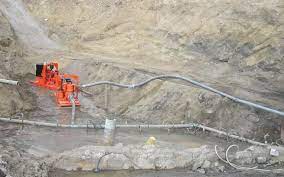
The mining industry in Australia, colloquially known as ‘Down Under’, is a vital component of the nation’s economy, characterised by vast landscapes, abundant resources, and innovative techniques. Integral to this industry are mining pumps – machinery that plays a critical role in the effective extraction and processing of minerals. Let’s dive into the types, significance, and roles of these mining pumps within the Aussie mining landscape.
Types of Mining Pumps
Submersible Pumps: Designed to operate underwater, these pumps are fully submerged in the liquid they are pumping, primarily used in underground mining operations to handle high concentrations of solids.
Centrifugal Pumps: Operating on a rotating impeller principle, these pumps convert rotational energy to fluid flow. Their robustness and efficiency make them ideal for transporting slurries across long distances.
Diaphragm Pumps: Also known as Air-Operated Double Diaphragm (AODD) pumps, they use compressed air as their power source. Their ability to handle a variety of chemicals makes them apt for transferring fluids with variable pH levels.
Slurry Pumps: Explicitly designed for thick, abrasive slurries, these pumps play a pivotal role in transporting mixtures of solid particles and liquids.
Borehole Pumps: Specifically crafted for deep well drilling, these pumps ensure a continuous water supply, crucial in the mining processes.
The Importance of Mining Pumps
Safety: With Australia’s stringent regulations on mining operations, ensuring the safety of the workforce and the environment is paramount. Efficient mining pumps help prevent water accumulation in mines, averting potential cave-ins or floods that could endanger lives.
Efficiency: Reliable pumps mean efficient transportation of fluids and slurries. This aids in streamlining the entire mining process, ensuring timely extraction, processing, and transportation of minerals.
Environmental Protection: Efficient pumps also help minimise the environmental footprint of mining operations. By managing waste and preventing unplanned discharges, they uphold Australia’s commitment to sustainable mining.
The Role of Mining Pumps
Dewatering: Mines, especially those below the water table, constantly face water ingress. Pumps aid in removing this excess water, ensuring operations aren’t hindered. With much of Australia being arid, the captured water can be repurposed, contributing to sustainable water management.
Slurry Transport: Extracted ores are often mixed with water to form slurries for easier handling. Pumps designed for abrasive and thick mixtures ensure these slurries are transported efficiently without excessive wear on the machinery.
Chemical Handling: Many mining processes involve the use of chemicals, whether for extraction or waste management. Specialised pumps, such as AODD pumps, play a role in safely transferring these chemicals, ensuring no environmental or human harm.
Cooling: Given Australia’s hot climate, cooling is critical in some mining operations, especially those close to the surface. Pumps facilitate the circulation of coolants, ensuring machinery functions optimally and safely.
Finally, the Australian mining industry, with its vast mineral wealth, is a powerhouse in the global arena. Yet, its success is intertwined with the efficiency and effectiveness of machinery like mining pumps. Whether it’s the rugged landscapes of Western Australia or the deep underground mines in Queensland, the pumps ensure the safety of workers, efficiency in operations, and minimal environmental impact. As the Aussie saying goes, “She’ll be right!” – and with top-notch mining pumps, she certainly will be.







